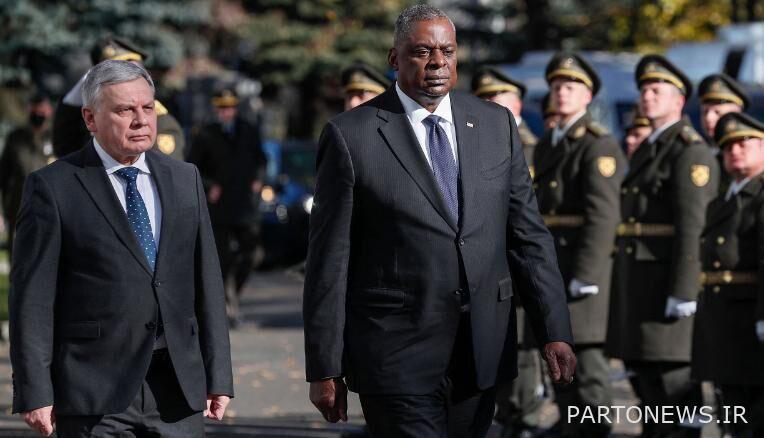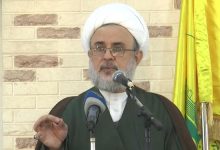What did “Austin” have in “Austin” for the Black Sea countries?

According to IRNA on Saturday, Lloyd James Austin visited the headquarters of the North Atlantic Treaty Organization (NATO) in Brussels on Thursday at the end of his European trip. During his visit, he visited three countries: Georgia, Ukraine and Romania, and met with the defense ministers and leaders of these countries.
During the meetings, Austin called for an end to what Russia called the occupation of the Crimean peninsula, calling them “the front line against Russian threats.” He also called for Russian non-interference in Ukraine’s eastern borders and an end to Russia’s “destabilizing” behavior in the Black Sea. He also called on Russia to end what it calls cyber-attacks on the United States and its allies.
Lloyd Austin’s trip to Eastern Europe and NATO headquarters in Brussels came as European officials recently expelled several Russian envoys from Brussels on charges of espionage.
Austin began his trip on Monday, October 18, with a visit to Georgia. His presence in the region is expected to be seen as a message to Russia. This is the first time a US Secretary of Defense has visited the region since the 2014 crisis.
The United States, which has been in Georgia for years under the pretext of training its military, praised what it called Georgia’s “sacrifices” in the 20-year war in Afghanistan through its defense minister. Georgia has been occupying Afghanistan with 20,000 troops and has seen 32 of its soldiers killed.
“We are strengthening and guaranteeing the (national) sovereignty of the countries that are at the forefront of Russia’s threats,” Lloyd Austin said during a meeting with Ukrainian officials. Georgia and Ukraine have both ceded parts of their territory to Russia in recent years. Russia owns parts of “Ossetia” and “Abkhazia” after the 2008 war. It also took control of the Crimean peninsula following a referendum in 2014. The United States and its allies do not recognize Crimea’s accession to Russia.
In separate meetings with President Klaus Johannes and Romanian Defense Minister Bucharest, Austin reaffirmed the United States’ commitment to a strategic alliance with NATO on Europe’s eastern borders. Unlike Georgia and Ukraine, Romania is a member of NATO. During the meeting, Austin criticized what he called Russia’s “evil” behavior in the Black Sea and stressed new challenges from China.
While Georgia and Ukraine have been waiting for years to join NATO and even dream of joining the European Union, the United States is concerned about Georgia’s desire for Russia if these failures continue. The United States is sending a message to Georgia and Ukraine that they should not be disappointed that the United States is violating its commitments.
The anxiety of the Western countries about Russia’s influence in Eastern Europe can be well felt in the story of the spying of the Bulgarian military for Russia. Earlier this year (March 2021), the Bulgarian government claimed to have arrested at least six members of a spy ring for Russia. Due to Bulgaria’s membership in NATO, this incident came as a great shock to NATO officials and led to a review of the NATO intelligence situation in Bulgaria.
As the United States shifts its strategic focus to the Pacific and India, it is essential that it reassures its European allies, especially in the east.
Austin had previously postponed his trip to Saudi Arabia indefinitely. However, he visited Qatar, Kuwait and Bahrain during a visit to the region. The United States has very large military bases in these three countries. In this trip, Austin’s goal is to reassure the reactionary governments in the region that the United States will remain loyal to them, despite leaving Afghanistan.
During his visit to Georgia, Austin signed an agreement to continue training the country’s military. “The United States has always been a strong supporter of democratic development in Georgia, and we are always striving to strengthen the democratic institutions in Georgia,” he said during the visit.

The color revolutions of Georgia and Ukraine took place under the same pretext of aiding the democratic process and at the instigation of the United States. Georgia’s Rose Revolution in 2003 ousted veteran Georgian politician and former Soviet foreign minister Eduard Shevardnadze and ousted Mikheil Saakashvili. In 2008, Georgia approved NATO membership through a parliamentary referendum, which has not yet taken place due to NATO disagreement.
The Orange Revolution in Ukraine began in November 2004 following protests against the results of the presidential election under the pretext of election fraud. While the two rivals had reached the second round by a small margin and society was waiting and inflamed, an excuse was needed to ignite the flame crisis. This excuse was supported by allegations of electoral fraud, and the country entered a series of crises that continue to this day.
With the coming to power of Viktor Yushchenko and the change of the constitution, the country rapidly increased its movement to the West. However, Ukraine has also shared Georgia’s failure and has so far neither been admitted to NATO nor sees the prospect of joining the European Union.
In the aftermath of these crises, Ukraine lost part of its territory and the country fell into the abyss of disintegration between eastern Russia and western Ukraine. Meanwhile, with a dispute over gas prices, Ukraine, which thought it had the upper hand over Russia’s gas pipeline to Europe, faced a Russian decision to bypass Ukraine and build a submarine gas pipeline that would provide energy security. And affected the country’s economy. This year, despite the high price of gas in Europe, Ukraine will not have a good winter ahead.
Similar to Georgia, Austin had come to reassure Ukraine that it would not leave them alone against Russia. However, the Ukrainians are well aware that the Russians have taken over at least the eastern part of the country and will quickly occupy it with a slight weakening of the United States or a reduction in its support.
Austin also visited Romania during the trip. Romania’s situation is slightly different from the previous two countries, as it has been a member of both NATO and the European Union for some time. In Bucharest, the Secretary of Defense, in a meeting with the President and Secretary of Defense, stressed the need for strategic cooperation and insisted that the United States adhere to these commitments. Austin’s visit to Romania is said to have been in recognition of the country as an “exemplary ally”. The fact is that the United States has more loyal allies in Eastern Europe.
Following this visit, on Thursday, October 21, US Secretary of Defense Lloyd Austin arrived at NATO Headquarters in Brussels and met with NATO Secretary General Jens Stollenberg, who was recently the Prime Minister of Norway. “We are in the midst of a change in NATO,” Stollenberg said during the meeting. “Over the past year, we have taken steps to strengthen the collective defense.”

In recent months, US military officials have repeatedly expressed concern about China’s potential threat to NATO members and sought to unite them around NATO’s axis against China. In particular, China’s recent missile test has added to these concerns, prompting Austin to say on the same trip that it is closely monitoring China’s tests. The new Chinese missile is a supersonic missile that, unlike ballistic missiles, flies at low altitudes without exiting the atmosphere and at supersonic speeds. The test is said to have surprised Pentagon experts, who did not expect such a breakthrough in China’s missile industry.
However, given US insistence, European countries, including Germany and France, seem reluctant to take a hostile approach to China. NATO members continue to see Russia as their number one threat, while China is a strategic priority for the United States. Thus, the Europeans are more and more worried that the United States will leave them behind against Russia. Especially after the bilateral meeting between Biden and Putin in Geneva in June this year, there are concerns that the United States may reach a bilateral agreement with Russia and leave the country free, at least in Eastern Europe.
In any case, the United States cannot be on constant alert on the three fronts of China, Russia and the Middle East. It will have to make concessions to Russia to focus on China. Similar to the concessions made to communist China fifty years ago to fight the Soviet Union.
After the US withdrawal from Afghanistan without consultation, the fears of the European members of NATO have increased to the point that the European Union and France have called for the creation of an independent European army.
Austin’s trip was to preserve his two allies in Eastern Europe, both of whom joined the Western Front with color revolutions, and to reassure them that even though you are not yet a member of NATO or the European Union, the shadow of America is over you. On the other hand, during his visit to NATO headquarters, like other meetings of American officials, he tried to gain the sympathy and support of Europe against China.
.

